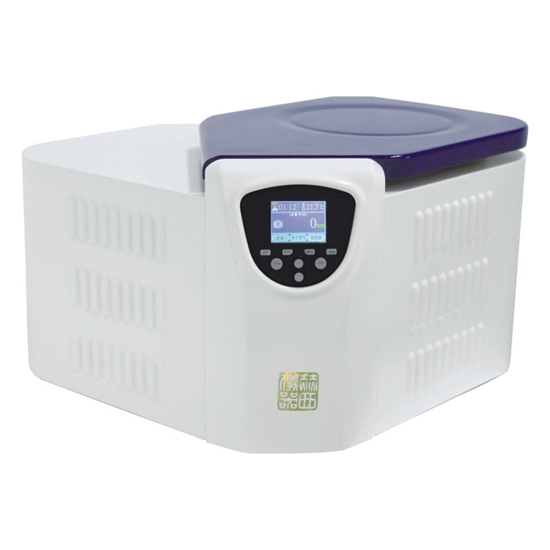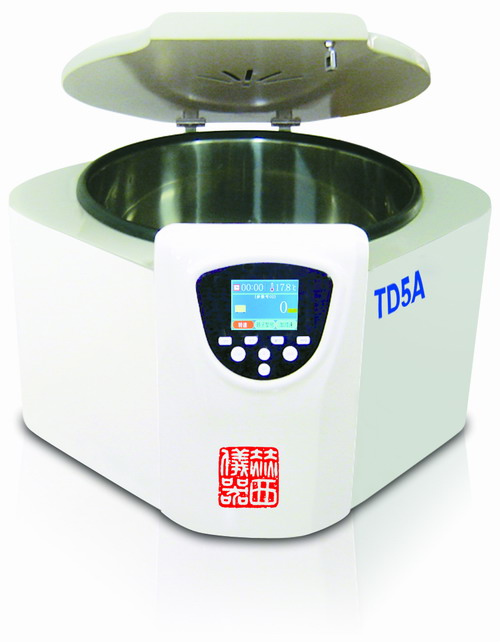- Benchtop High Speed Centrifuge
- Floor high speed centrifuge
- High speed refrigerated centrifuge
- Tabletop Low Speed Centrifuge
- Low speed refrigerated centrifuge
- Free-standing Low Speed Centrifuge
- Laboratory centrifuges
- Medical centrifuge
- Automatic decapping centrifuge
- Petroleum centrifuge
- Large capacity centrifuge
- Hematology Centrifuge
- PRP centrifuge
- Refrigerated Centrifuge
- Blood Bank Centrifuge
- Mini centrifuge
- Special centrifuge
- Centrifuge rotors
- Electronic Balance
- Vacuum Centrifugal Concentrator
- Moisture Analyzer
Basic requirements for the establishment of a cell culture laboratory:
1. Cell culture is a kind of aseptic operation technology. It is required that the working environment and conditions must be free of microbial contamination and not be affected by other harmful factors.
2. The cell culture chamber and design principles are to prevent microbial pollution and harmful factors, and require a clean working environment, fresh air, dryness and no smoke.
3. The design principle of the cell culture room is generally that the aseptic operation area is located on the inner side with less movement. The routine operation and closed culture are in a room, which is a clean room with a class 100,000 clean environment. The scrubbing and sterilizing work is located outside the clean room to prevent items from contaminating the clean indoor environment. The cell clean room requires an air conditioning system and maintains a certain positive pressure on the outside world.
4. Anatomical laboratory is mainly used for the separation of organs and tissues. It requires a sterile operation table, dissecting microscope, various surgical equipment, etc.
Intelligent desktop high-speed refrigerated laboratory centrifuge 3H24RI
Tissue cell culture room has some special equipment in addition to the general equipment in general laboratories. Basically can be divided into two categories:
The first category is commonly used basic equipment;
The second category is higher-level special equipment.
Basic equipment commonly used in cell culture laboratories
1. Microscope: Inverted microscope-is one of the routine work equipment necessary for the daily work of the tissue cell culture room, which is convenient for grasping the growth of cells and observing the pollution.
2. Incubator: Cells cultured in vitro need to survive at a constant temperature just like cells in vivo. In most cases, the optimal temperature is 37 ° C, and the temperature difference should generally not exceed ± 0.5 ° C. At ℃, it can not be tolerated for several hours, and it will die soon above 40 ℃. Therefore, an incubator capable of controlling temperature is needed, such as a constant temperature incubator and a CO2 incubator with high sensitivity.
3. Drying box: Some instruments and utensils used in the cell culture box need to be dried before they can be used. Glassware should be sterilized by dry heat.
4. Water purification device: Cell culture requires higher water quality. Cell culture and the preparation of water related to cell culture must be strictly purified beforehand. For cell culture, three times of distilled water are required to prepare various culture solutions and reagents: even if it is used for washing glassware, more than two times of distilled water should be used.
5. Refrigerator: The cell culture room must be equipped.
a. Ordinary refrigerator or freezer—storage culture medium, physiological saline and other culture items and short-term preservation of tissue specimens.
b. Low-temperature refrigerator (-20 ° C)-used to store preparations that need to be frozen and stored for long periods of time, such as enzymes, serum, etc.
6. Cell Freezer: Liquid nitrogen containers are commonly used for the storage. Divided into different types and specifications according to the needs of use. When choosing to purchase a liquid nitrogen container, three factors must be taken into consideration: the volume, the ease of handling, and the amount of liquid nitrogen (economic).
7. Centrifuge: When performing cell culture, routinely preparing cell suspensions, adjusting cell density, washing, collecting cells, etc. is usually required. Laboratory centrifuges are usually required. Generally, a domestic desktop centrifuge of 4000 rpm can be conventionally configured, such as cell sedimentation, and a low-speed centrifuge can be used. Excessive centrifugal force may sometimes cause cell damage.
Desktop low speed centrifuge TD5A
8. Balances: torque balances, precision balances and various electronic balances are commonly used.
9. Sterilizer: Generally it is a high-pressure steam sterilizer, and items that come into direct or indirect contact with the cells need to be sterilized.
10. Filters: The culture fluids currently used in cell culture work, including artificial culture fluids, serum, digestive pancreatin, etc. often contain substances such as vitamins, proteins, peptides, growth factors, etc. These substances are easily exposed to high temperature or radiation Denaturation or loss of function occurs, so the above liquids are mostly disinfected by filtration to remove bacteria. At present, filters commonly used are glass filters and microporous filters. Various filters have their use principles and characteristics.
Common culture vessels:
Culture vessels are vessels used for cell inoculation and growth. They can be made of neutral hard glass with good transparency, non-toxicity, or non-toxic, transparent and smooth special plastics. Various consumables required for cell culture, various cell culture plates, cell culture flasks, plate pipettes, etc.
Culture flask: made of glass or plastic. It is mainly used for culturing and propagating cells. During the cultivation, the bottle cap of the culture bottle is covered with a screw cap or a rubber stopper, and the rubber stopper is mostly used for sealed culture. The specifications of domestic culture bottles are expressed in volume (ml), such as 250ml, 100ml, 25ml, etc .; imported culture bottles are usually expressed in terms of bottom area (cm2).
Petri dish: made of glass or plastic for experiments such as collecting, separating, processing tissues or doing cytotoxicity, colony formation, single cell isolation, isotope incorporation, cell reproduction, etc. The commonly used petri dishes are 10cm, 9cm, 6cm, 3.5cm and so on.
Multiwell culture plate: made of plastic. It can be used for various detection experiments such as cell cloning and cytotoxicity. The advantage is that it saves samples and reagents, can test a large number of samples at the same time, and is easy to perform aseptic operation. The culture plate is divided into various specifications, commonly used specifications are: 96 wells, 24 wells, 12 wells, 6 wells, 4 wells and so on.
Vessel related to culture operation
Liquid storage bottles: Blue cap bottles are commonly used to store or prepare various culture liquids such as culture liquid, serum and reagents. Storage bottles are divided into various specifications, such as 1000ml, 500ml, 250ml, 100ml, 50ml, 5ml and so on.
Straw: It is mainly divided into graduated straws and graduated straws. Graduated pipettes are mainly used to suck and transfer liquids, and commonly used in 1ml, 2ml, 5ml, 10ml and other specifications. The graduated straws are divided into straight straws and elbow straws. In addition to sucking and transferring liquids, elbow-tip straws are often used for pipetting, mixing and passage of cells.
Sampler (pipette): Divided into micro pipettes and electric pipettes. For aspirating, moving liquids or dropping samples. The amount can be adjusted according to needs, and the suction is accurate and convenient. It can ensure that the content of experimental samples (or reagents) is accurate and the repeatability is good.
Other supplies: There are still centrifuge tubes for collecting cells, test tubes for placing reagents or temporary insertion of straws, glass or stainless steel containers for straws for disinfection, aluminum lunch boxes or storage for storing small culture items for high-pressure disinfection Slots, rubber tips on top of straws, closures of various bottles, tube stoppers, caps, ampoules or tubes for cryopreserved cells, syringes, beakers and graduated cylinders of different specifications, and funnels, for use on ultra-clean benches Alcohol lamp, a micro-watering can containing alcohol or other disinfectant for cleaning and disinfecting the hands of the experimenter before operation.
instrument
It is mainly used for dissecting, taking material, cutting tissue and holding objects during operation. Commonly used are: scalpels or scalpels, surgical scissors or anatomical scissors (curve shears and straight shears), used to dissect animals, isolate and cut tissue, to prepare primary culture materials; ophthalmic iris small shears (curve shears or straight Scissors), used to cut tissue material into small pieces; vascular forceps and tissue forceps, ophthalmic forceps (bent, straight), used to hold sterile items (such as small coverslips) to hold tissue, etc .; dental probe Or substitutes for small pieces of tissue from primary culture.
2.Special equipment for cell culture laboratory
In addition to the above-mentioned common basic equipment, cell culture laboratories should be equipped with special or advanced equipment if necessary to carry out laboratory work more efficiently, accurately, and in-depth. E.g:
(1) Enzyme-linked immunoassay instrument-can be used for immunological determination and cytotoxicity, drug sensitivity detection, etc.
(2) Ultra-low temperature refrigerator (-80 ° C)-easy to store some reagents and specimens.
(3) Rotary culture device-used for the cultivation of some special cells or a large number of cells that need to be harvested.
(4) Fluorescence microscope—observation of fluorescently stained samples.
(5) Flow cytometer-can detect cells more accurately and quickly.
(6) Various instruments for detecting cell culture conditions, such as a multi-functional cell culture analyzer designed for rapid analysis of major or key nutrients, metabolites and gas content in cell culture media, portable CO2 concentration measuring instruments, etc. .
Other instruments
For cell experiments, you may need a shaker and magnetic stirrer to mix the liquid; there are some stainless steel or glass utensils that are difficult to clean with cells. If the demand for bath and crushed ice is large, you need to purchase an ice maker; in addition, ultrasonic cell disruption may be required to break the cells;
- PREVIOUS:Large capacity centrifuge rotor balance Guidelines
- NEXT:Discussion on Calibration Method of Medical Centrifuge of Hussey Instrument
